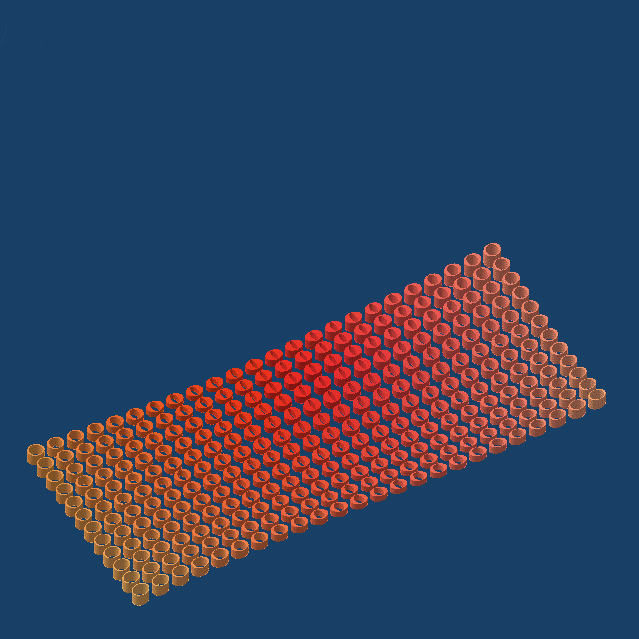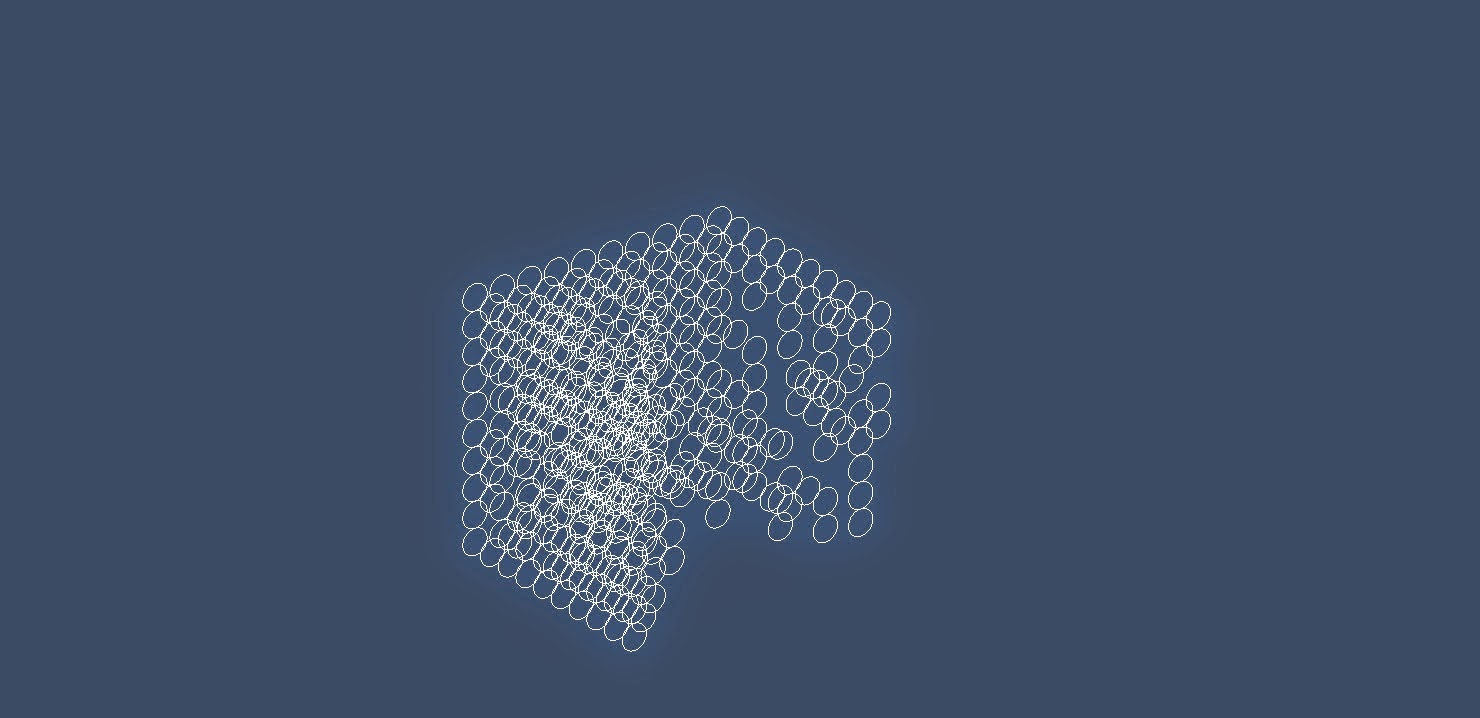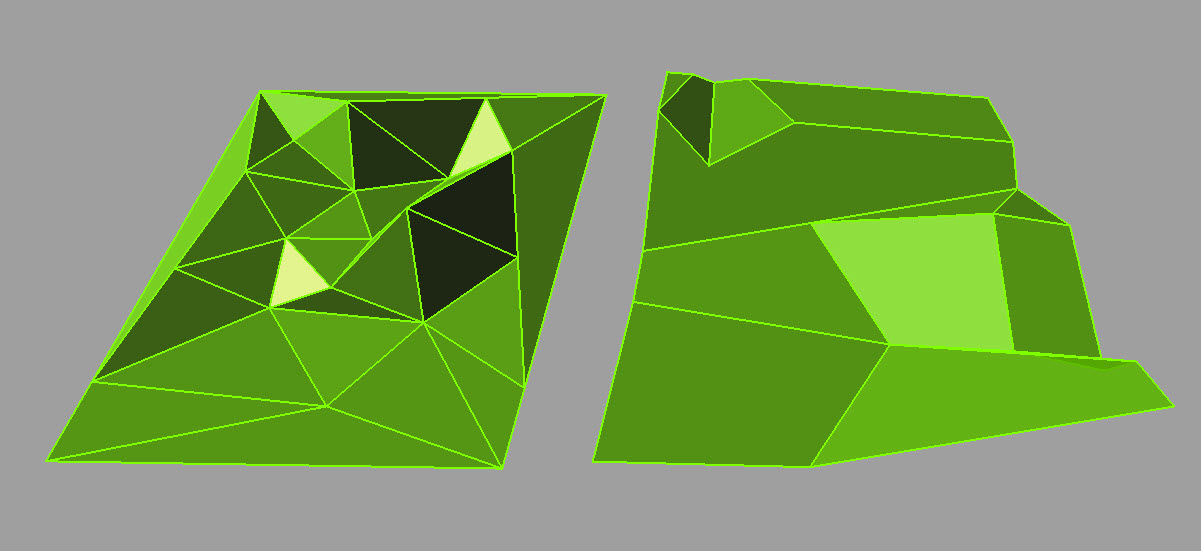The work is progressing nicely in the Intro to Robotic Fabrication seminar at Taubman College. The work of the seminar is aggregated on the course blog (HERE).
The seminar uses the Kuka Agilus Workcell to explore the potential of parametric thinking with architectural models. The architectural model represents an important site for architectural speculation and as computational processes create design ambitions where quantity drive qualities robots become a critical mode of architectural model production.
Image from Team BMO in the seminar. Here they are using the two robots to hold strips of waxed felt to produce a model of precisely twisted surfaces.
Friday, November 7, 2014
Wednesday, October 8, 2014
New and improved POWERCOPY tutorial
Previous tutorials used sketches to build the powercopy. This new method is much more robust and will not break like previous approaches did. There are times when using sketches makes sense but this method will be less likely to break down.
(click image to launch tutorial)
Based on feedback this video is much higher resolution (so it may take a minute to initiate depending on your connection speed).
It has also been a while since the last video tutorial and my settings were lost. I apologize for the poor sound quality and I will resolve this as I produce future tutorials.
(click image to launch tutorial)
Based on feedback this video is much higher resolution (so it may take a minute to initiate depending on your connection speed).
It has also been a while since the last video tutorial and my settings were lost. I apologize for the poor sound quality and I will resolve this as I produce future tutorials.
Labels:
parametric,
powercopy,
tutorial
Friday, August 1, 2014
Daubmann named Director of Masters of Science in Architecture
I have been named the Director of the Masters of Science in Architecture degree at Taubman College. This new role began this summer and I am looking forward to the challenges of this position. I am really excited to be shaping the direction as we consider the role and opportunities associated with these types of research degrees.
More to come soon.
Labels:
misc
Sunday, June 1, 2014
Simple approach to mapping
This model is an approach to mapping a series of divergent agendas. A number of geometric and visual traits are triggered by 4 attractor points. The cylinders are generated on a topography. The cylinder varies its height, thickness in two directions and its color as informed by the proximity to the multiple atractor points.
The model uses a knowledge pattern that is informed by a series of embedded rules controlling the color and two thicknesses). The animation only moves the attractor points and leaves the topography in place.
The model uses a knowledge pattern that is informed by a series of embedded rules controlling the color and two thicknesses). The animation only moves the attractor points and leaves the topography in place.
Labels:
knowledge pattern,
parametric,
rules
Friday, May 2, 2014
seminar final work
The final projects have all been posted to the student blogs at the course blog. Here are a couple of the final projects with links.
Eric's sheet metal feathers scripted with attractor points and unfolded for fabrication:
Nate's scripted matrices:
Mark's tetrahedral solid subtraction:
Yin's scripted dynamic facade:
Eric's sheet metal feathers scripted with attractor points and unfolded for fabrication:
Nate's scripted matrices:
Mark's tetrahedral solid subtraction:
Yin's scripted dynamic facade:
Tuesday, January 21, 2014
Course blog up and running for Intro to RoboFab
Here is a link to the course blog. We are aggregating all of the student work on the site too.
Intro to Robotic Fabrication
Intro to Robotic Fabrication
Sunday, January 19, 2014
Course Blog up for Generative Design Computing
Here is a link to a site that will aggregate all the student work from the seminar:
Generative Computing Winter 2014
Taubman College of Architecture
Generative Computing Winter 2014
Taubman College of Architecture
Sunday, January 12, 2014
Folding Techniques in Rhino for UG2
Here is a link to a video tutorial to supplement a workshop that I did for the UG2 Design Studio. The assignment asks the students to consider the role of folding as a technique. Click the image to launch the video.
Labels:
developable,
rhino,
tutorial
Saturday, January 11, 2014
Exciting Courses this Term
I'll am super excited to be teaching two digital design courses this term at Taubman College:
-Intro to Robotic Fabrication: this course will be using an Agilus work cell to explore the potential for digital fabrication and manufacturing tools to re-inform our understanding of architectural models as tools for design speculation.
-Generative Computing: this course will build on the successes of the Virtual Engagement seminar offered to the MS_DT students but will intensify the discussion of randomness as a tool for the production of multiple and varied populations of design.
-Intro to Robotic Fabrication: this course will be using an Agilus work cell to explore the potential for digital fabrication and manufacturing tools to re-inform our understanding of architectural models as tools for design speculation.
-Generative Computing: this course will build on the successes of the Virtual Engagement seminar offered to the MS_DT students but will intensify the discussion of randomness as a tool for the production of multiple and varied populations of design.
Subscribe to:
Posts (Atom)

.JPG)












